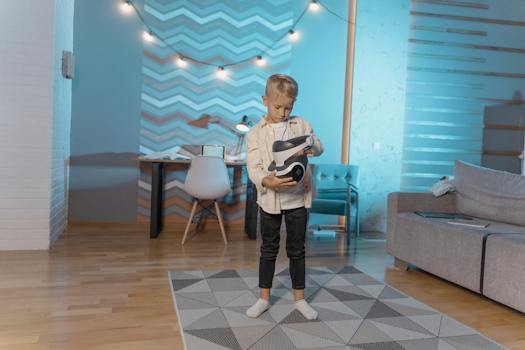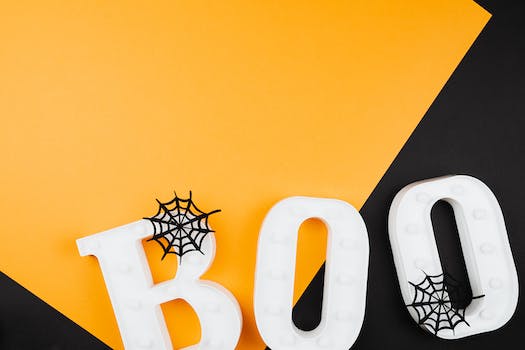

-
Table of Contents
"Unveiling the Enigmatic: The Illusion of Seeing Nonexistent Faces"
Introduction
The illusion of seeing nonexistent faces, also known as pareidolia, refers to the phenomenon where individuals perceive meaningful patterns or faces in random or ambiguous stimuli. This can occur in various contexts, such as seeing faces in clouds, rocks, or even in inanimate objects. Despite the absence of any actual faces, our brains tend to interpret these patterns as familiar and recognizable facial features. This illusion highlights the powerful role of our brain's pattern recognition system in shaping our perception of the world around us.
The Psychological Phenomenon of Pareidolia: Seeing Faces in Inanimate Objects
The human brain is a remarkable organ that constantly processes information from our surroundings. One fascinating psychological phenomenon that occurs is pareidolia, which refers to the tendency of perceiving familiar patterns, such as faces, in random stimuli. This phenomenon has intrigued scientists and psychologists for years, as it sheds light on the intricate workings of our perception.
Pareidolia is a universal phenomenon that affects people from all walks of life. It occurs when our brain tries to make sense of ambiguous or random stimuli by attributing meaning to them. Faces are one of the most common patterns that our brain tends to perceive in inanimate objects. This can range from seeing a face in a cloud formation to recognizing facial features in a piece of toast.
The reason behind this phenomenon lies in our brain's innate ability to recognize and process faces. From an early age, humans are wired to pay special attention to faces, as they convey important social cues and emotions. This evolutionary adaptation has allowed us to navigate complex social interactions and form meaningful connections with others. However, this predisposition to recognize faces can sometimes lead to false positives, where we perceive faces where none exist.
One of the most famous examples of pareidolia is the "Face on Mars." In 1976, NASA's Viking 1 spacecraft captured an image of a Martian mesa that appeared to resemble a human face. This discovery sparked widespread speculation and fueled theories about extraterrestrial life. However, subsequent images taken by higher-resolution cameras revealed that the face-like formation was simply a result of shadows and lighting conditions. Despite this, the initial perception of a face on Mars captured the public's imagination and highlighted the power of pareidolia.
Pareidolia is not limited to visual stimuli alone. It can also occur in other sensory modalities, such as hearing. Auditory pareidolia refers to the phenomenon of perceiving meaningful sounds, such as voices or music, in random noise. This can manifest in various ways, such as hearing voices in the wind or discerning words in a jumbled conversation. The brain's ability to find patterns and meaning in noise is a testament to its remarkable adaptability.
While pareidolia is a fascinating phenomenon, it is important to note that it is not a sign of mental illness or cognitive impairment. In fact, it is a normal and common occurrence that happens to everyone to some degree. Our brains are wired to find patterns and make sense of the world around us, even if those patterns are not actually present.
Understanding pareidolia can have practical applications in various fields. For example, it can help improve computer vision systems by teaching algorithms to recognize and interpret visual patterns more accurately. Additionally, it can aid in the development of artificial intelligence systems that can better understand and respond to human emotions.
In conclusion, pareidolia is a captivating psychological phenomenon that highlights the intricate workings of our perception. The tendency to see faces in inanimate objects is a result of our brain's innate ability to recognize and process facial features. While pareidolia can sometimes lead to false positives, it is a normal occurrence that happens to everyone. By studying pareidolia, we can gain insights into the complexities of human perception and potentially apply this knowledge to various fields.
The Role of Facial Recognition in the Illusion of Seeing Nonexistent Faces

The human brain is a remarkable organ, capable of processing vast amounts of information and making sense of the world around us. One of its most impressive abilities is facial recognition, the skill that allows us to identify and remember the faces of those we encounter. However, this ability is not infallible, and sometimes our brains can trick us into seeing faces that aren't really there. This phenomenon, known as the illusion of seeing nonexistent faces, has fascinated scientists and psychologists for years.
Facial recognition is a complex process that involves several regions of the brain working together. When we see a face, our brain quickly analyzes its features, such as the eyes, nose, and mouth, and compares them to the faces we have stored in our memory. This comparison allows us to recognize familiar faces and distinguish them from unfamiliar ones. However, this process is not always accurate, and our brains can sometimes make mistakes.
One common explanation for the illusion of seeing nonexistent faces is pareidolia, a psychological phenomenon in which we perceive familiar patterns, such as faces, in random or ambiguous stimuli. This can occur when we see patterns in clouds, tree bark, or even in inanimate objects. Our brains are wired to recognize faces, so when we encounter stimuli that vaguely resemble facial features, our brain automatically tries to make sense of them by perceiving a face.
Another factor that contributes to the illusion of seeing nonexistent faces is our tendency to seek out patterns and make connections. Our brains are constantly looking for meaning and order in the world, and this can lead us to see faces where there are none. This phenomenon is known as the Gestalt principle of closure, which suggests that our brains fill in missing information to create a complete picture. When we encounter stimuli that resemble facial features, our brain fills in the missing details to create the illusion of a face.
The illusion of seeing nonexistent faces can also be influenced by our emotional state and expectations. Studies have shown that when we are in a heightened emotional state, such as fear or anxiety, we are more likely to perceive faces in ambiguous stimuli. This suggests that our emotions can influence how our brains process and interpret visual information. Additionally, our expectations can also play a role in the illusion of seeing nonexistent faces. If we are primed to expect a face, either through suggestion or prior experience, we are more likely to perceive one, even if it isn't actually there.
Understanding the role of facial recognition in the illusion of seeing nonexistent faces has important implications for various fields, including psychology, neuroscience, and even artificial intelligence. By studying how our brains process and interpret visual information, researchers can gain insights into the mechanisms underlying facial recognition and the factors that contribute to the illusion of seeing nonexistent faces. This knowledge can help improve our understanding of how the brain works and may have practical applications in fields such as facial recognition technology and cognitive psychology.
In conclusion, the illusion of seeing nonexistent faces is a fascinating phenomenon that highlights the complexity of facial recognition and the limitations of our perception. Factors such as pareidolia, the Gestalt principle of closure, emotional state, and expectations all contribute to this illusion. By studying this phenomenon, researchers can gain valuable insights into the workings of the human brain and potentially develop new applications in various fields. The illusion of seeing nonexistent faces serves as a reminder that our perception is not always as reliable as we might think.
Exploring the Cultural and Historical Significance of Imaginary Faces in Art and Religion
The human brain is a remarkable organ capable of processing vast amounts of information and making sense of the world around us. One of its most fascinating abilities is the tendency to see patterns and faces even when they don't actually exist. This phenomenon, known as pareidolia, has been the subject of much scientific research and has significant cultural and historical implications.
Pareidolia is a natural response that occurs when our brain tries to make sense of ambiguous or random stimuli by attributing meaning to them. This can manifest in various ways, but one of the most common examples is seeing faces in inanimate objects or abstract patterns. This tendency is so ingrained in our perception that we often don't even realize we are doing it.
The cultural and historical significance of pareidolia can be seen in various forms of art and religious practices throughout the ages. Many ancient civilizations, such as the Egyptians and the Greeks, incorporated imaginary faces into their artwork and architecture. These faces were often believed to represent gods or mythical beings, and their presence was thought to bring protection and good fortune.
In religious contexts, the perception of imaginary faces has played a crucial role in shaping beliefs and practices. For example, in Christianity, the phenomenon of seeing the face of Jesus or the Virgin Mary in everyday objects has been reported by many believers. These sightings are often interpreted as signs or miracles, reinforcing faith and devotion.
Similarly, in other religious traditions, such as Hinduism and Buddhism, the perception of imaginary faces is associated with spiritual experiences and enlightenment. Meditative practices often involve focusing on abstract patterns or objects, which can trigger the brain's tendency to see faces. This can lead to profound insights and a sense of connection with the divine.
The cultural significance of pareidolia extends beyond religious contexts. In art, the use of imaginary faces has been a common motif throughout history. From ancient cave paintings to modern abstract art, artists have incorporated faces or face-like shapes to evoke emotions or convey meaning. These imaginary faces can represent a range of emotions, from joy and serenity to fear and anguish, allowing viewers to connect with the artwork on a deeper level.
Moreover, the perception of imaginary faces has also influenced popular culture and entertainment. Many cartoon characters, such as Mickey Mouse or SpongeBob SquarePants, are designed with exaggerated facial features to make them more relatable and appealing to audiences. This taps into our brain's natural inclination to see faces and helps create a sense of familiarity and connection.
In conclusion, the illusion of seeing nonexistent faces, known as pareidolia, is a fascinating aspect of human perception. Its cultural and historical significance can be seen in various forms of art and religious practices throughout the ages. Whether it is the belief in divine manifestations or the use of imaginary faces in artistic expression, pareidolia has shaped our understanding of the world and continues to captivate our imagination.
Q&A
1. What is the illusion of seeing nonexistent faces?
The illusion of seeing nonexistent faces refers to the phenomenon where individuals perceive facial features or patterns in random or ambiguous stimuli, such as clouds, shadows, or inanimate objects.
2. What causes the illusion of seeing nonexistent faces?
The illusion of seeing nonexistent faces is believed to be caused by a cognitive process called pareidolia, which is the tendency of the brain to interpret vague or random stimuli as meaningful patterns, particularly faces.
3. Why do people experience the illusion of seeing nonexistent faces?
People experience the illusion of seeing nonexistent faces due to the brain's natural inclination to recognize and interpret facial features. This tendency is thought to have evolutionary roots, as it helped our ancestors quickly identify potential threats or social cues in their environment.
Conclusion
In conclusion, the phenomenon known as the illusion of seeing nonexistent faces refers to the tendency of humans to perceive facial features in random patterns or objects where no actual face exists. This illusion highlights the brain's innate predisposition to recognize and interpret facial information, even in ambiguous or incomplete stimuli. Various factors, such as pareidolia and the brain's face processing system, contribute to this illusion. Understanding this phenomenon can provide insights into the complex mechanisms underlying human perception and cognition.










